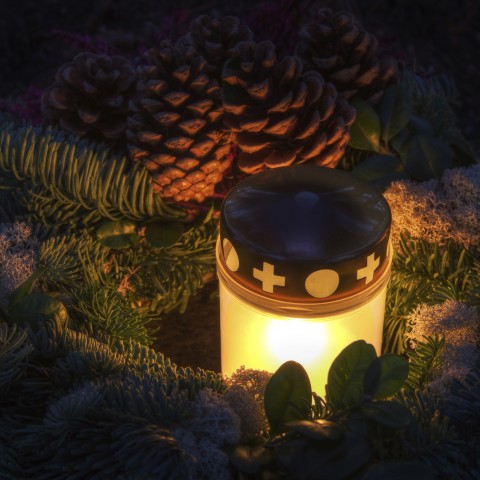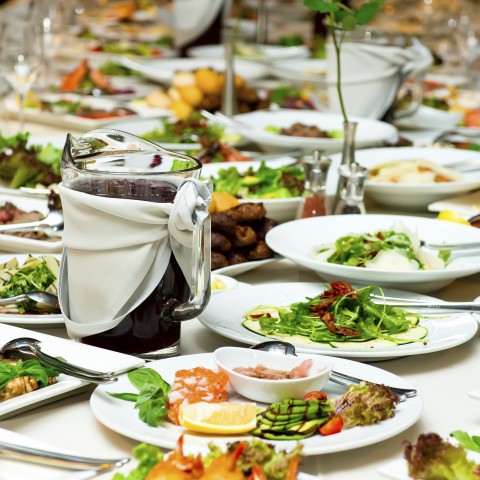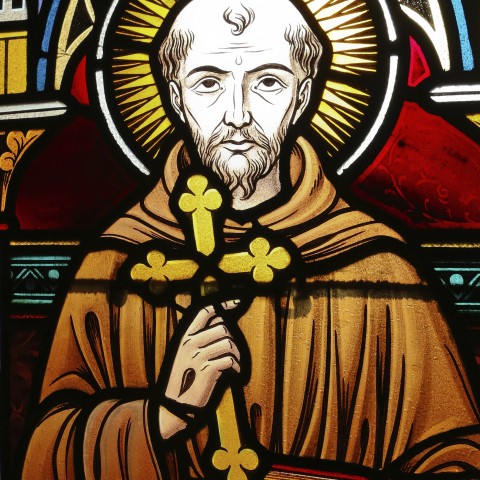The Sweden All Saints’ Day holiday is, above all else, a day to remember and honor those who have passed away. This can be close friends or family members, though traditionally people were meant to remember all the dead saints who didn’t have their own special day.
In this article, you’ll learn about All Saints’ Day in Sweden, from its history to how people observe it today.
At SwedishPod101.com, we hope to make every aspect of your language-learning journey both fun and informative!
1. What is All Saints’ Day?
All Saints’ Day has roots in the 700s, but gained importance in Sweden during the 1900s and was inspired by the Catholic tradition. Looking at Sweden’s Catholic Middle Ages we come across All Saints’ Day for the first time in 1198.
All Saints’ Day is a Catholic tradition aimed at celebrating all the saints who had not received their own day. During the Middle Ages, it was said that this day was also the first official winter day.
After the Reformation in Sweden in the 1500s, they attempted to remove the date from the calendar because the saints did not belong to the Protestant Lutheran belief. The day ended up staying, though.
2. When is All Saints’ Day?
Each year, All Saints’ Day falls on a different date. The holiday falls at the earliest on October 31, and at the latest on November 6, on a Saturday.
For your convenience, here’s a list of this holiday’s date for the next ten years.
- 2019: November 2
- 2020: October 31
- 2021: November 6
- 2022: November 5
- 2023: November 4
- 2024: November 2
- 2025: November 1
- 2026: October 31
- 2027: November 6
- 2028: November 4
3. All Saints’ Day Traditions & Celebrations in Sweden
In Sweden today, people believe that All Saints’ Day should be a day filled with peace and quiet, and you should ideally spend this day with your closest family, mourn, and think of those who have passed away. It’s common to have a nice family meal and a pleasant get-together.
Toward the end of the 1800s, people began to light candles at graves, mostly in the bigger cities. To light candles at graves was not entirely unknown in Sweden before then, but it was traditionally done on Christmas Eve. People didn’t start lighting candles at graves for All Saints’ Day until after World War II. They believed that in connection with the end of summer and the beginning of winter, the dead returned home and needed to be guided back by the candles and fires.
4. The Original Date
Before 1953, All Saints’ Day always took place on November 1.
The date change has confused some people who used to celebrate All Saints’ Day on November 1, so there’s actually another day with nearly the same name (allahelgonadagen) which falls on this day.
Further, the peasant society used November 1 to predict the weather. They thought that if the sun didn’t shine long enough that you could saddle a horse, the winter would be very snowy.
5. Essential All Saints’ Day Vocabulary
Here’s some must-know Swedish vocabulary for All Saints’ Day!
- Minnas
“Remember” - Ljus
“Light” - Kyrka
“Church” - Lampa
“Lamp” - Alla helgons dag
“All Saints’ Day” - Gravplats
“Burial ground” - Helgon
“Saint” - Att ära
“Honor” - Festmåltid
“Feast“ - Grav
“Grave” - Kyrkogård
“Church yard” - Uppståndelse
“Resurrection”
To hear each of these vocabulary words pronounced, and to see them accompanied by relevant images, be sure to check out our Swedish All Saints’ Day vocabulary list!
Final Words
We hope you enjoyed learning about the Swedish All Saints’ Day with us, and that you took away something valuable from this lesson.
Learning about different countries’ cultures is fun and rewarding, and probably the most enriching aspect of trying to master a language. If you would like to continue delving into Swedish culture, you may find the following pages interesting:
- Waffle Day Vocabulary
- How to Say Merry Christmas in Swedish
- Top 5 Things You Need to Know About Swedish Pop Culture
- Traditional Clothing in Sweden
- Tourist Attractions in Sweden
Mastering a new language comes at the price of much hard work and patience. At SwedishPod101.com, we really believe you can learn Swedish, and we’ll be here with help and encouragement on each step of your language-learning journey!













